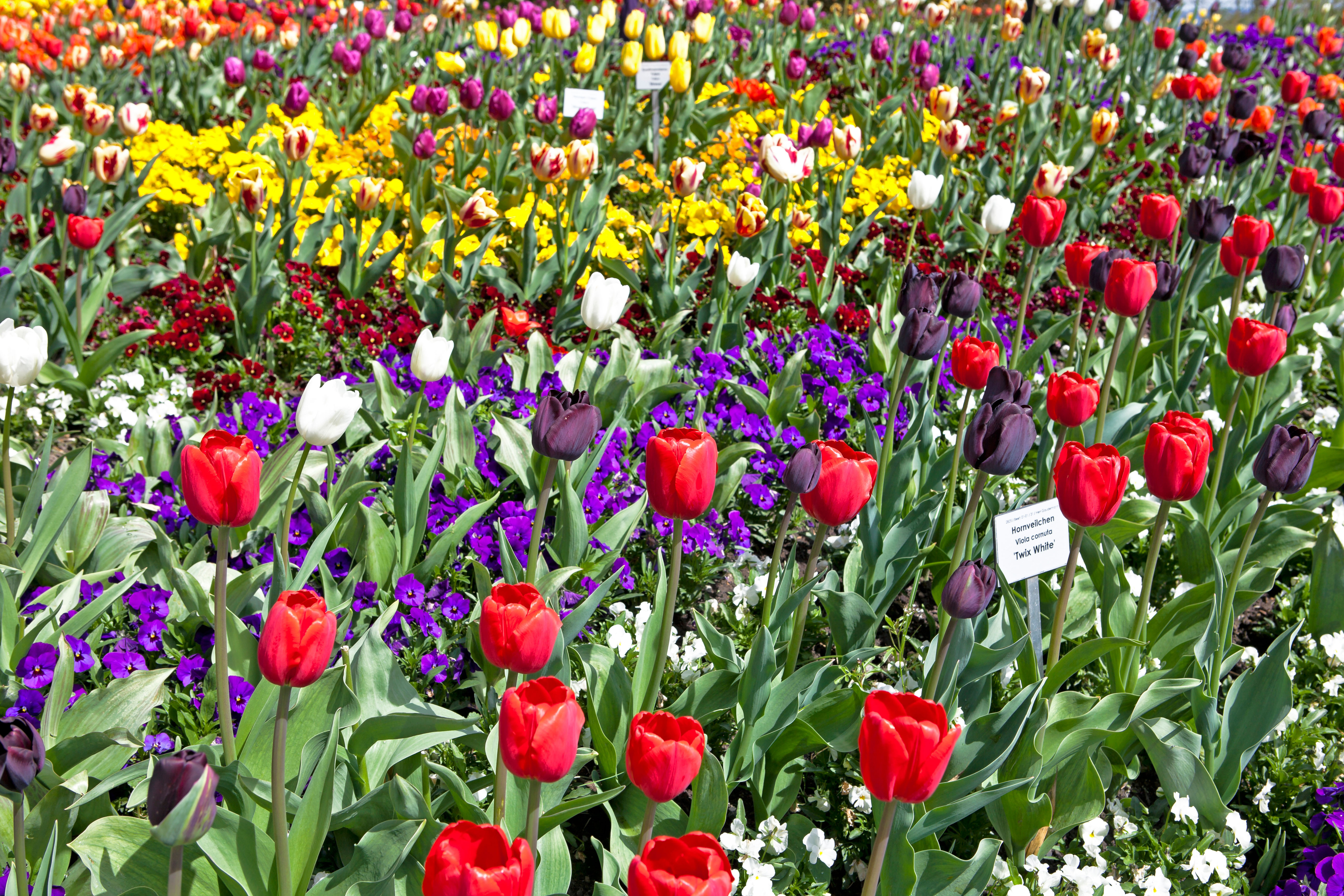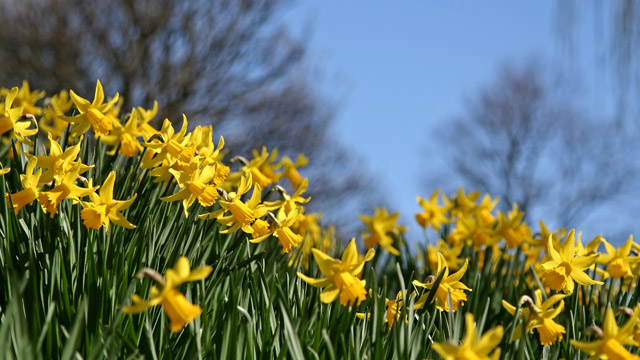Alan Titchmarsh on bulbs: Why they're my 'firework' plants – sit back and watch them go
Alan Titchmarsh talks about his love of bulbs, which ones not to bother with, and the difference between a gardener and a farmer.


The difference between farmers and gardeners, they say, is that gardeners always believe that next year will be better; farmers always know it will be worse.
This rather misanthropic aphorism aside, the most delightful thing about being a gardener is that each season of the year offers a new planting opportunity and September is the time for bulbs.
If gardening is travelling hopefully, then that sentiment is nowhere better encapsulated than with the botanical miracle that is a bulb or a corm – the former being a condensed shoot (as in tulips and daffodils) and the latter a condensed stem (as in crocuses).
Firework plants, I’ve come to call them – light the blue touch-paper and stand well back – as their capability to flower in the first year is almost guaranteed, thanks to the work of the bulb grower. The embryonic flower will already be there, deep inside the enveloping flesh of the bulb.
Those planted in any half-decent, well-drained soil will invariably give a good account of themselves in the first year, but it’s what they do in successive seasons that’s less predictable.

Depth is important. Plant too shallowly and the bulbs will become starved and feeble. A hole three times as deep as the bulb itself is the general rule of thumb. When naturalising daffodils and narcissi in grass, the easiest thing to do is to lift a patch of turf, excavate a hole 6in–8in deep and space the bulbs out 3in–6in apart before returning the soil and the turf. This will give them room to fatten up in succeeding years without the spacing looking too mean.
Some gardeners like to scatter their bulbs across the surface of the grass in a graceful arc and plant them where they fall. I find this enormously labour-intensive and the resulting plantation can look rather sparse.
Exquisite houses, the beauty of Nature, and how to get the most from your life, straight to your inbox.
A collection of clumps, each comprising a couple of dozen bulbs, is, I find, infinitely preferable and the clumps can be arranged in an arc if that’s your predilection.
What if your daffs don’t flower well in succeeding years, in spite of the fact that they’ve been planted at the right depth?
It could be down to a dry spell at flowering time, when the following year’s flowers are being formed deep down in the bulb, or a result of the foliage being chopped off prematurely or tied neatly into pigtails before the food manufactured in the leaves has been sent down into the bulb.
Allow it to flop for a good six weeks after flowering before you give it the chop – by then, the nourishment should have reached the bulb. If prolonged drought occurs in spring, give the area a thorough soaking.
"Plant more of the ones that do well – you have better things to do than to persevere with weaklings"
Be observant, too. You’ll find that some varieties take happily to naturalisation in grass and others – no matter how kind and considerate you are of their wellbeing – simply don’t thrive. Plant more of the ones that do well – you have better things to do than to persevere with weaklings.
Tulips planted in grass can look particularly enchanting, but don’t imagine that, in such a situation, they’ll have the staying power of narcissi or the capacity to increase in number. Quite the reverse. They’ll fizzle out over a couple of years.
With tulips, it pays to add to your planting scheme every autumn and they’re tolerant of gardeners who are slow off the mark. Plant them in November and they’ll still flower well the following spring. Daffodils, however, start rooting as early as August when they’re left in the ground, so the sooner you can commit them to the earth, the better.
In beds and borders, some varieties of tulip – Spring Green is a case in point – can be planted and left to grow and flower reliably each year. Others prefer to be dug up after flowering, dried off and the largest of the bulbs replanted the following autumn.
If you do want to try ‘once and for all’ planting, experiment with several varieties and see which are reliable. It’s worth planting them a good 8in deep to ensure their survival and to avoid spearing them in summer.
The rain is thundering down on the tin roof above me as I write this, but the prospect of new varieties to plant lifts my spirits. I’m glad I’m not a farmer.
My Secret Garden by Alan Titchmarsh is published by Ebury
Alan Titchmarsh is a gardener, writer, novelist and broadcaster.
